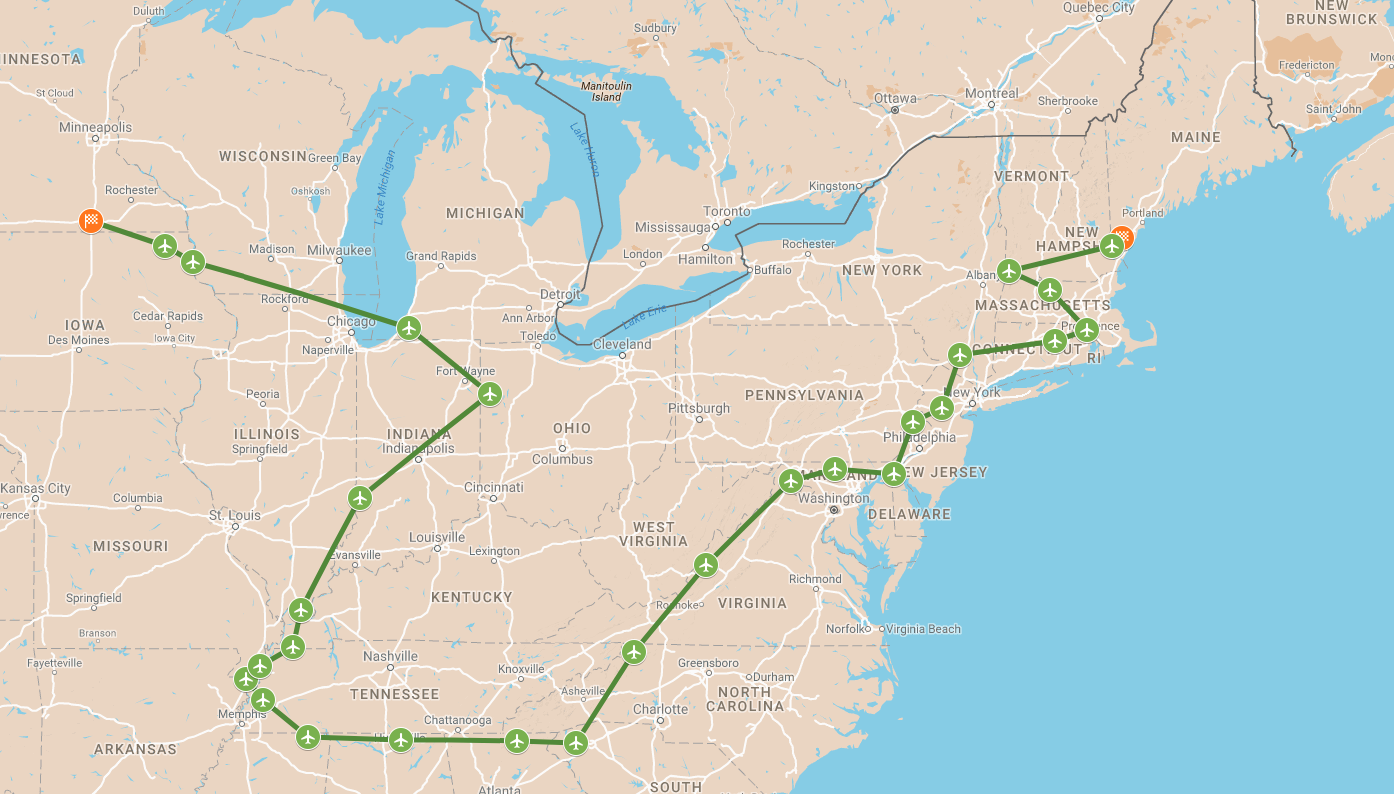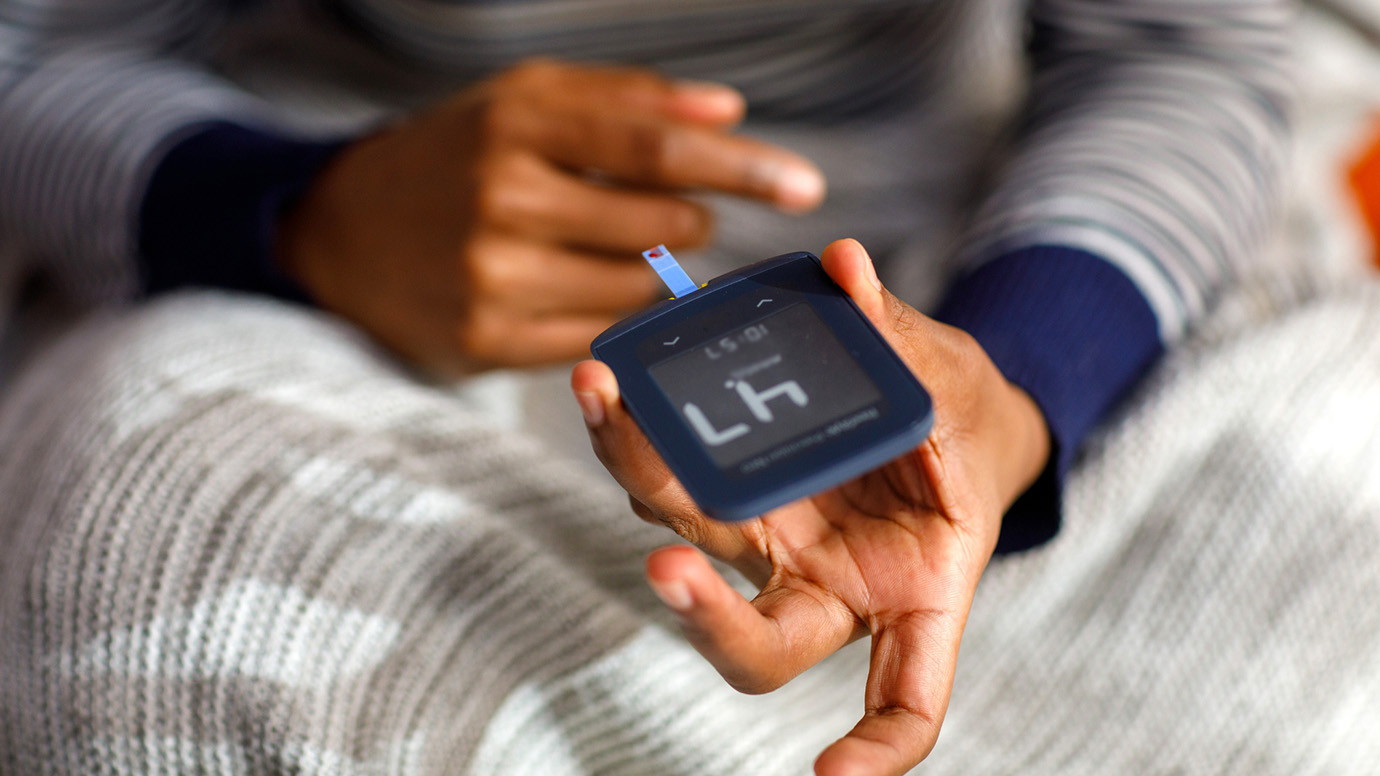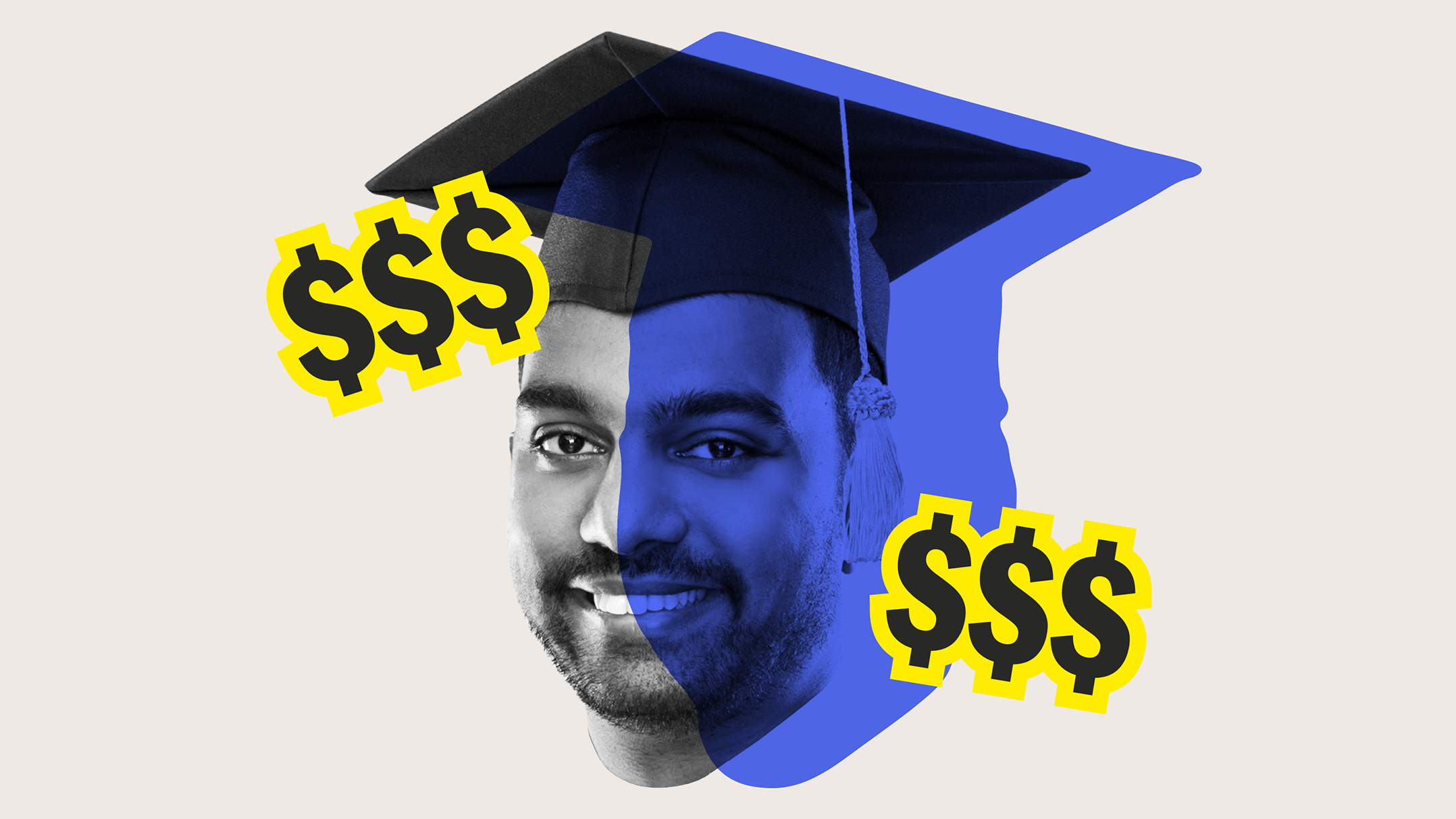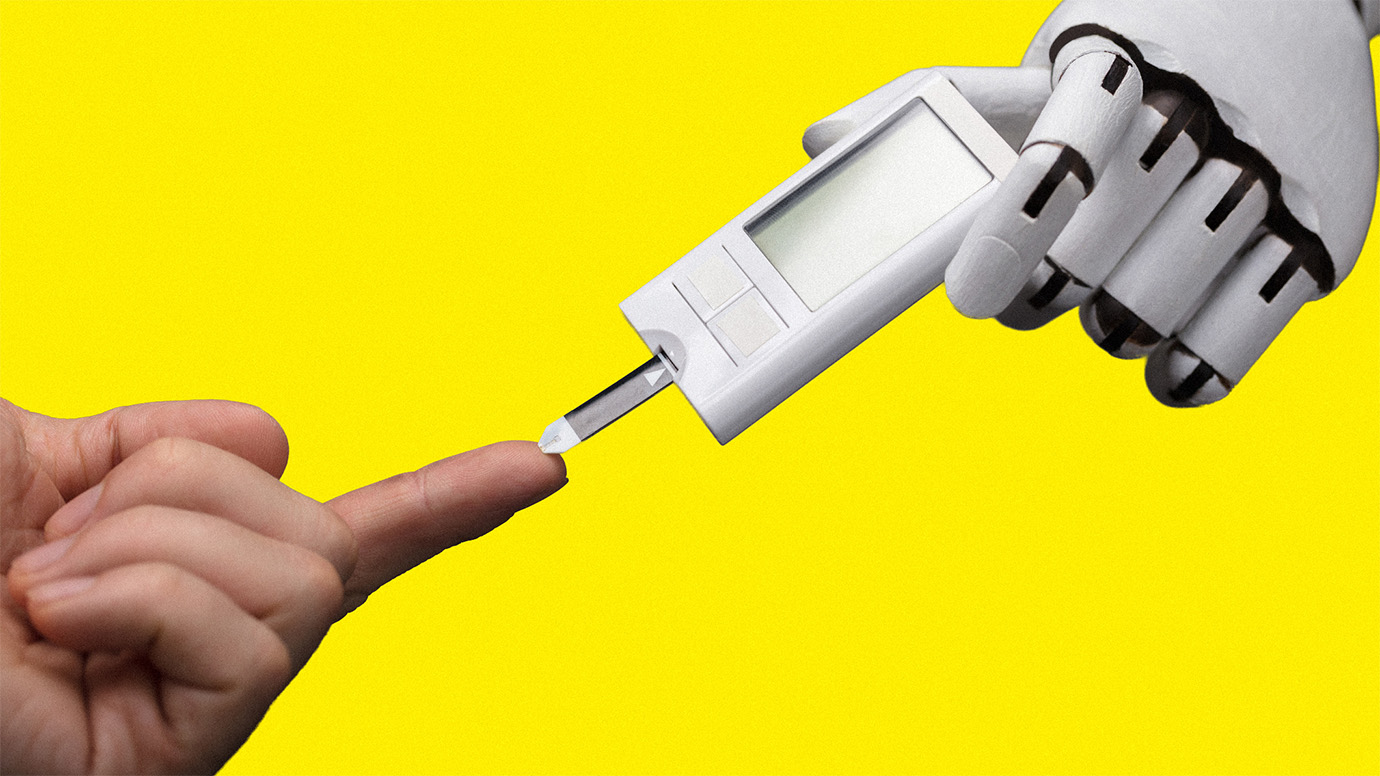T1D Duo Breaks World Record in Flight
Written by: Michelle Boise
8 minute read
August 17, 2018
On July 27, 2018, Douglas Cairns and Thor Dahl teamed up with Dexcom to beat the world record of most states visited in the US in 24 hours. Previously, the record had been 23 states and the duo extended it to 29. More, both did it while managing their type 1 diabetes, a health condition that still disqualifies many pilots from operating aircraft.
Beyond Type 1 wanted to know what they hoped to accomplish with this impressive feat and how and where in the world pilots with type 1 diabetes were still be discriminated against.
Douglas Cairns from Fort William, Scotland and was diagnosed in Feb of 1989, which finished his military career as a pilot. Nearly 30 years later, Thor was diagnosed in Norway and due to this lost his military helicopter license.
Both wore Dexcom Continuous Glucose Monitors (CGMs) to help them track and manage blood sugars on the flight and to prove that technology has come a long way since the regulations against pilots with type 1 diabetes (T1D) came about.

BT1: How did a diagnosis affect your career?
Thor Dahl: At first I was told that I wouldn’t fly anymore. I didn’t care about the diagnosis because I had friends who had it, but when I was told I wouldn’t fly again, that was the worst. But I did some research and followed the case further. I am still working in the airforce on the administration side. I am trying to convince the medical institute in Norway that is safe to keep flying. I am not sure it is going in the right direction though.
[In Norway you can’t do any aviation if you have type 1 diabetes.]
Douglas Cairns: I had the classic symptoms for six weeks, but I was a classic pilot and didn’t want to go to the doctor so ended up losing 28 pounds in weight. When I eventually went to the base doctor and took a blood sugar test, he said, ‘It is confirmed that you are a diabetic and you were a pilot.’ It was a harsh way to tell someone you’d lost your career.
In ’89 you couldn’t get a license to fly anywhere in the world. I was grounded from the moment I was hospitalized in the air force hospital for 10 days. I learned as much as I could and I learned that it could be controlled, but even with good control it had this devastating impact on my career. I would have had to change branches in the air force so it was straight forward for me, and I left.
I changed careers and went into finance.
BT1: You’ve broken a world record, did you have any doubts you could do this?
Thor Dahl: The weather was the biggest concern. The previous record was 24 states, so with our planning we would have the new world record in 16 hours. We were pretty comfortable and did 29 which was what we had planned for.
BT1: What was the weather like?
Thor Dahl: If there was too much fog or too many thunderstorms, we wouldn’t be able to take off, which could prevent us from reaching our goal. We were close once. We had weather radar so kept getting reports.
Douglas Cairns: We met up in Boston on the 26 of July. We both felt comfortable achieving the world record which was done in the first 16 hours of flight. Fatigue was a potential risk, but we were in fact very well rested and fortunately fatigue didn’t play its hand. Over Lake Michigan, it was pitch black ahead and behind you were very aware that it was night time.
BT1: How did you two meet and what motivated you to try this?
Thor Dahl: I was diagnosed last year and in research I came across flyingwithdiabetes.com run by Douglas. I read about his previous stunts and records. This guy had landed on the North Pole and circumnavigated the world. I realized this was a guy I had to talk to. In my project to convince the Air Medical Institute, I decided to make a short documentary. I asked Douglas if I could fly down to London and meet him. I think that was February. When he talked about this record, I remembered an idea and he thought it was cool, so from there we planned our trip.
Douglas Cairns: When we met up in London, I run the whole series of record breaking flights to show people what we [people with diabetes] can do when it comes to flying, and diabetes need not limit the scope of someone’s ambitions. I also coordinate a group: Pilots with Diabetes. To me, meeting Thor was a mirror of me at 25 when I just lost my flying career. It is with great pleasure that I help people get back to their flying career. He told me his plan, and I thought let’s do it in an airplane instead of car and commercial flights.
BT1: How long have you used Dexcom CGMs?
Douglas Cairns: I have used Dexcom since 2009. Personally I find it to be a fantastic medical device to use. For flying, the regulations are such that once you have a medical to fly you, have to show you have good blood sugar control. And you have to test your blood sugar 30 minutes before takeoff, each hour in flight and a half hour before landing. I find that checking the CGM every 10 minutes, gets you a picture of your trend, and you can manage at a quite tight level. Range 5.5-16.6 mmol/L100-300 mg/dL is the requirement in USA.
BT1: Who do you report your numbers to?
Douglas Cairns: In the USA, you don’t have to report to anyone, it is left up to you to correct if out of range. There is no requirement to report your blood glucose levels (BGs). In the UK, Ireland, Poland and Austria—you do have to record and write in log book and then you download your CGM readings and have them read. You have to report and be more retrospective.
Thor Dahl: I got [my Dexcom] in first of February. That really made a difference for me. It’s not only for flying but also day-to-day life. You are able to look at the trends and see the graph that is being produced. At first, you have no idea what is happening. Over time you can analyze that data. You can see how things affect your blood sugar like exercise and food and all that information makes it easier to maintain stable values, to avoid what doesn’t work and to stick to the things that do work
BT1: What about this device made it easier to manage your T1D in a long flight like this?
Thor Dahl: It is very reassuring to be able to always peek at your blood sugar and see how it is developing without having to take out the regular meter and start sticking. It reassures you that nothing is happening and staying stable.
Douglas Cairns: I would echo those points. Whenever flying, I’m using a CGM as a adjunct. It is a fantastic tool that helps you maintain tighter control. The CGM device is a great way to check blood sugar full-stop. You can also fly keeping a tight range on blood sugars. We had a number of flights and were about to text our blood sugar checks on the ground. If we were below the 100 mark, it would delay you from taking off, and knowing that there was a potential for delay. That said, the CGM is great piece of kit to have tighter control and for flying—it makes sure you won’t be out of range.
BT1: Do you know the eight countries that allow pilots to fly who are insulin-dependent? You can get a private license in the US, but not a professional one, correct?
Douglas Cairns: The UK, Ireland, Austria, Poland are the countries in Europe that allow private and commercial but only if you were diagnosed after getting your license. It feels arbitrary though and we are trying to change it. Canada is the same.
In the US you can apply for class A-1 but no one has received it. The private system we use flying in the US is the same for the commercial pilots in Canada and Europe as well.
Israel allows private, commercial and military and Australia allows private flying only.
BT1: Why do you think T1D pilots should be able to fly professionally in the US? Do you think there should be restrictions?
Thor Dahl: The regulations that are current, they are based on old medication. In the FFA, regarding diabetes, the rules are from 1949, you needed to go to the hospital to get your blood glucose checked. A CGM makes it so much easier to control. We aren’t saying that everybody with diabetes should be able to get a license. There is of course requirements to document and prove good control. Not everyone has that. To quote a scientific paper, there are doctors that say in a well controlled person with diabetes there is less chance of hypoglycemia than there is risk for a random heart attack. That is the thing—it is defintely a factor.
I can see concern, but due to new medication and technology, the risk is getting so small. It is important to have an individual check on everyone. It just isn’t fair that there are so many people who have the ability to be as safe as anyone else are banned. We aren’t saying that everyone should fly but we are trying to show how possible it is to control with a diagnosis today.
Douglas Cairns: I would, while heatedly, echo what Thor has said. I think the point is diabetes technology has come such a long way. The ICAO (International Civil Aviation Organization) uses guidelines for diabetes policies based on research from the 60’s.
They are aware that the guidelines are based on old research. Particularly with insulin pumps, insulin analogs and certainly CGMs. It is totally different to what it was 40 to 50 years ago. The other thing is I have been flying in the US system since year 2000. I have gained 4k hours which is almost a military career. In all that time, never did I have cause for concern in regards to diabetes control.
Another point I’d like to echo, a lot of the aviation authorities allow pilots to fly, the stress being on the good control over diabetes. That comes to hypoglycemia awareness. I am personally very happy to share my experience and I think it is a safe effective system. I think T1Ds should be able to fly commercially if meeting the requirements.
We are building a database. It will be very good to see that research and the conclusions to be made. The initial indications have been very very encouraging. The research is being built and is totally relevant to the pilots with diabetes population.
BT1: What advice would you give to people with type 1 who want to fly?
Thor Dahl: The first thing I would say is get a CGM as early as possible. Because it is helpful. For me I have a special motivation. Maybe not all people are willing to do that. I have been also adjusting my diet and eating fewer carbohydrates. Nothing wrong with eating carbs but a lot easier to control your blood sugar. After my diagnosis, I am probably more healthy. Sounds weird but I am eating healthier and exercising more often. I learned that if I exercise three to four times a week, it really helps stabilize my blood sugars. I would recommend to eat less carbs and exercise more, which are all good things for your health.
BT1: Fav in-the-air snacks?
Thor Dahl: Though we both haven’t been low in the air, I always have glucose tabs and Skittles. With this flight the sugar-free Red Bull certainly helped. I also ate a lot nuts.
Douglas Cairns: I was lower carbs but more tuna. Sandwiches. My favorite snacks not just in-flight: fruit pastels. They are a little too tasty actually. The flight we had though, we were having small snacks and not having too much food in anyone time.
BT1: Was this your longest trip in-flight?
Thor Dahl: Yes.
Douglas Cairns: For me as well. 17 hours was my longest previously. Your aviating the entire period of time.

Author
Michelle Boise
With an MFA in writing from the University of San Francisco, Michelle believes in the power of words and looks for the human quality behind every story. She’s a writer, editor and content guru, having worked on both literary magazines and e-commerce platforms. Before joining the Beyond Type 1 team, she developed health-conscious articles for Fitbit.
Related Resources

A diabetes diagnosis doesn’t mean your sex life is off-limits. It's still yours to enjoy—just...
Read more

Insulin is the main hormone your body uses to control how much sugar is in...
Read more

If you have diabetes, you know insulin affects low blood sugar (hypoglycemia), but it’s not...
Read more

